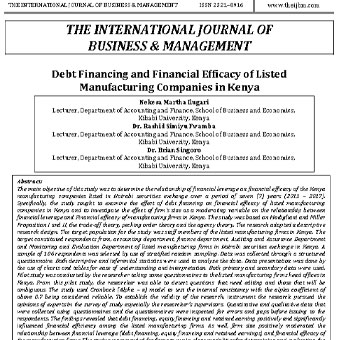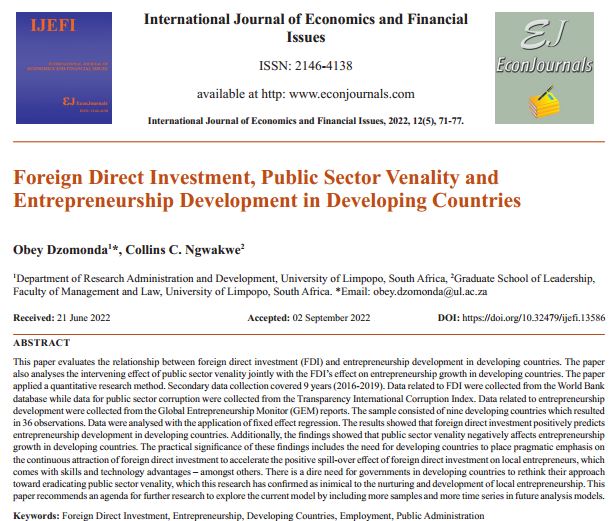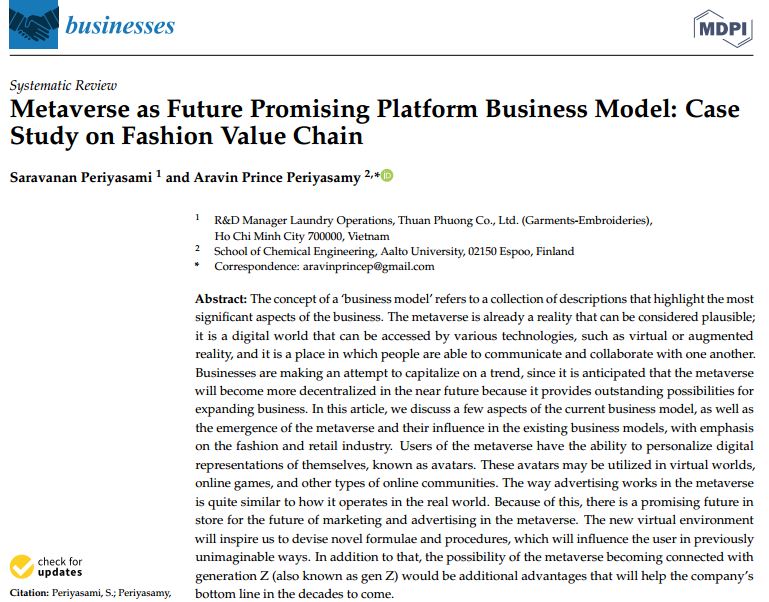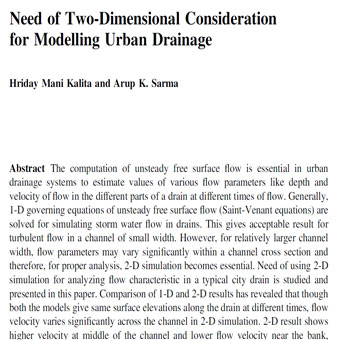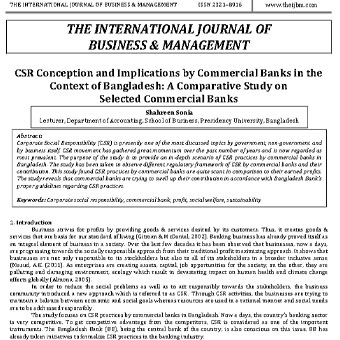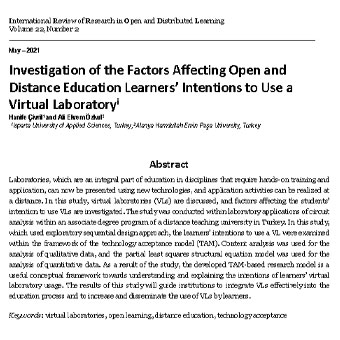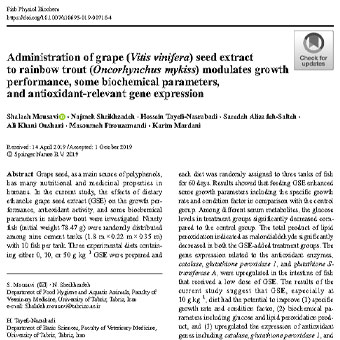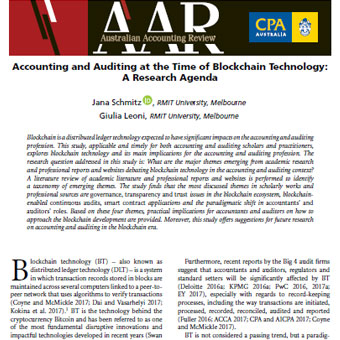عنوان فارسی مقاله:تامین مالی مبتنی بر استقراض و اثربخشی مالی شرکتهای تولیدی پذیرفته شده در بورس کنیا
چکیده
هدف اصلی این مطالعه تعیین رابطه اهرم مالی بر اثربخشی مالی شرکت های تولیدکننده کنیا پذیرفته شده در بورس اوراق بهادار نایروبی در مدت هفت (۷) سال (۲۰۱۱ – ۲۰۱۷) بود. به طور خاص ، این مطالعه به دنبال بررسی تأثیر تأمین مالی بدهی بر اثربخشی مالی شرکتهای تولیدی فهرست شده در کنیا و بررسی تأثیر اندازه شرکت به عنوان یک متغیر تعدیل کننده بر رابطه بین اهرم مالی و اثربخشی مالی شرکتهای تولیدی در کنیا بود. این مطالعه بر اساس پیشنهاد مودیلیانی و میلر I و II ، نظریه مبادله ، نظریه نظم ، نظریه و نمایندگی ، انجام شد. روش تحقیق توصیفی است. جامعه هدف این مطالعه ، کارکنان شرکتهای تولیدی ذکر شده در کنیا بود. هدف شامل پاسخ دهندگان ، گروه حسابداری ، بخش مالی ، بخش حسابرسی و اطمینان و بخش نظارت و ارزیابی شرکتهای تولیدی فهرست شده در بورس اوراق بهادار نایروبی در کنیا بود. نمونه ای از ۱۰۶ نفر با استفاده از نمونه گیری تصادفی طبقه ای انتخاب شدند. داده ها از طریق پرسشنامه ساختار یافته جمع آوری شد. برای تجزیه و تحلیل داده ها از آمار توصیفی و استنباطی استفاده شد. ارائه اطلاعات با استفاده از نمودارها و جداول برای سهولت درک و تفسیر انجام شد. از داده های اولیه و ثانویه استفاده شد. مطالعه آزمایشی توسط محقق انجام شد و برخی پرسشنامه ها را به دفاتر اصلی شرکتهای تولیدی ذکر شده در کنیا برد. در این مطالعه آزمایشی ، محقق توانست سوالاتی را که نیاز به ویرایش دارند و مبهم هستند ، تشخیص دهد. در این مطالعه از مدل کرونباخ (آلفا – α) برای آزمایش سازگاری داخلی استفاده شد و ضریب آلفای بالای ۰٫۷ قابل اعتماد در نظر گرفته شد. برای اثبات اعتبار تحقیق ، ابزار تحقیق نظرات متخصصان در نظرسنجی مطالعه به ویژه سرپرستان محقق را دنبال کرد. داده های کمی و کیفی که با استفاده از پرسشنامه جمع آوری شده و پرسشنامه ها قبل از صدور به پاسخ دهندگان از نظر خطا و شکاف بررسی شده اند. یافته ها نشان داد که تامین مالی بدهی ، تأمین سرمایه خالص و حفظ سود مثبت و به طور قابل توجهی بر کارآیی مالی شرکتهای تولیدی ذکر شده تأثیر می گذارد. همچنین ، اندازه شرکت رابطه بین اهرم مالی (تامین مالی بدهی ، تأمین سرمایه خالص و سودهای انباشته) و اثربخشی مالی شرکتهای تولید کننده را تعدیل کرد. این مطالعه به شرکت ها توصیه می کند تا روش هایی را برای تعیین و ارزیابی منابع بهینه تامین مالی مشاغل تعیین کنند. پس از انجام این کار ، هدف از استقراض وجوه در ابتدا باید مشخص شود و یک سیستم نمره گذاری برای ارزیابی میزان ماندگاری منابع بدهی برای شرکت ها ایجاد شود. همچنین ، تأکید بر این است که تأمین مالی حقوق صاحبان سهام با اهداف شرکت مطابقت دارد. سرانجام ، نیاز است که شرکت ها فقط در مواقعی که پروژه های سرمایه گذاری وجود دارد که می توانند کارایی مالی را افزایش دهند ، درآمد خود را حفظ کنند.
- لینک دانلود فایل بلافاصله بعد از پرداخت وجه به نمایش در خواهد آمد.
- همچنین لینک دانلود به ایمیل شما ارسال خواهد شد به همین دلیل ایمیل خود را به دقت وارد نمایید.
- ممکن است ایمیل ارسالی به پوشه اسپم یا Bulk ایمیل شما ارسال شده باشد.
- در صورتی که به هر دلیلی موفق به دانلود فایل مورد نظر نشدید با ما تماس بگیرید.
 متن به فارسی | ترجمه مقالات و متون علمی | ترجمه و دانلود مقالات و انواع متون علمی و ادبی و پذیرش سفارش ترجمه
متن به فارسی | ترجمه مقالات و متون علمی | ترجمه و دانلود مقالات و انواع متون علمی و ادبی و پذیرش سفارش ترجمه
